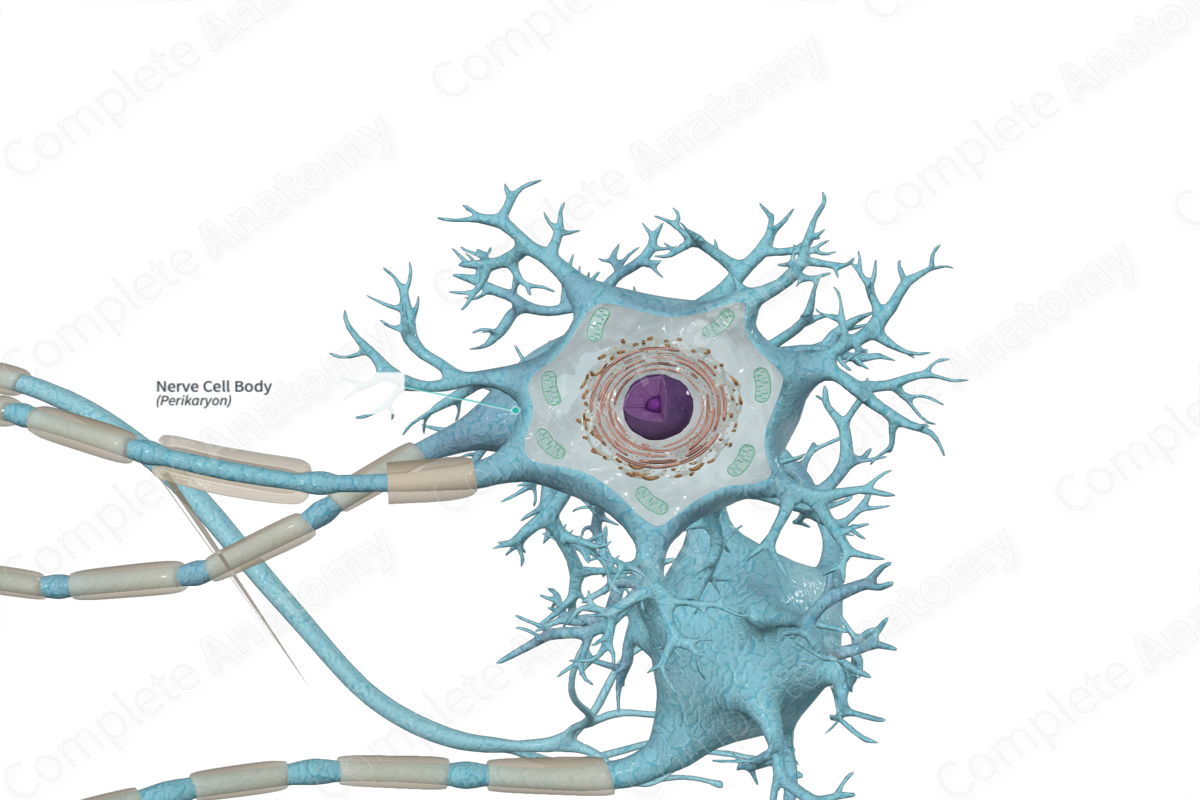
Quick Facts
The cell body is the portion of a cell that contains the nucleus, independent of projections such as an axon or dendrites (Dorland, 2011).
Structure and/or Key Features
The nerve cell body (often called perikaryon or soma), houses a large, spherical, euchromatic nucleus with a prominent nucleolus, and cytoplasm. The size of cell bodies varies depending on the type of neuron and can range from 5-140 μm (Marieb, Wilhelm and Mallatt, 2012).
The cytoplasm contains highly developed rough (granular) endoplasmic reticulum and numerous polyribosomes, indicative of the high levels of protein syntheses occurring for both internal use and transport (Ross and Pawlina, 2006).
The region of the cytoplasm actively synthesizing proteins stains intensely with basic dyes due to the presence of RNA. Large clumps of rough endoplasmic reticulum in large motor neurons are referred to as Nissl bodies or Nissl substance.
The cytoplasm also contains a Golgi complex consisting of parallel arrays of smooth cisternae located around the periphery of the nucleus. Mitochondria are also abundant particularly in the axon hillock but also scattered within all parts of the cytoplasm. Intermediate filaments and microtubules are abundant cytoskeletal elements in the cell body and, in some neurons, lipofuscin is a cytoplasmic inclusion (Mescher, 2013).
Anatomical Relations
Neuronal cell bodies are located within the gray matter of the central nervous system or when clustered as nuclei. Cell bodies in the peripheral nervous system are located in sensory or autonomic ganglia.
Dendrites and axons are processes that extend from the cell body. Axons extend from the nerve cell body at the axon hillock.
Function
The cell body of a neuron is responsible for controlling all the trophic and receptive functions of the neuron.
References
Dorland, W. (2011) Dorland's Illustrated Medical Dictionary. 32nd edn. Philadelphia, USA: Elsevier Saunders.
Marieb, E. N., Wilhelm, P. B. and Mallatt, J. (2012) Human Anatomy. fifth edn.: Benjamin Cummings.
Mescher, A. (2013) Junqueira's Basic Histology: Text and Atlas. 13th edn.: McGraw-Hill Education.
Ross, M. H. and Pawlina, W. (2006) Histology: A text and atlas. Lippincott Williams & Wilkins.
